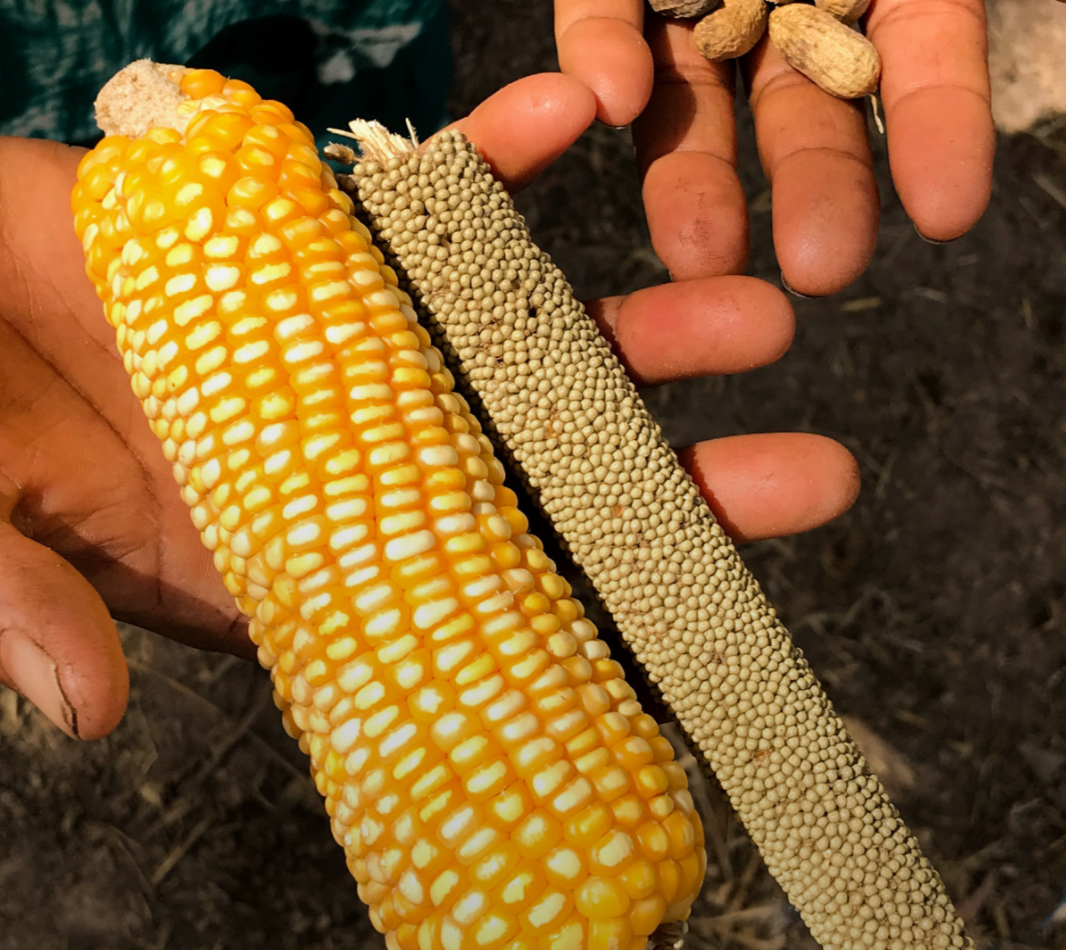Strengthening of The Gambia’s Climate Change Early Warning System

Introduction
The project’s 1st phase built climate forecasting systems across Gambia to help communities prepare in advance for extreme weather. The project provided equipment and training for forecasting offices and TV/radio networks.
The project’s 2nd phase aims to: Support the transition of Gambia’s National Meteorological Services (NMS) towards becoming financially sustainable; upgrade the early warning systems; and provide a critical mass of skilled human resources to operate the system

For more information on this case study, please download the pdf from the right-hand column.
Links to SDGs

SDG2: Increasing food security by benefitting 100,000 livelihoods – most of them fishermen, herdsmen, and farmers. A 30% reduction in rainfall in the past 50 years is threatening food production in Gambia.
SDG6: Establishing a water quality monitoring system to achieve 75% coverage of the nation’s land area, including 5 surface water-level monitoring networks and 2 groundwater- level networks.
SDG8: Developing a critical mass of skilled human resources to operate Gambia’s early warning system. The aim is for the National Meteorological Service to be able to recruit 15 staff per year.
SDG13: Constructing 9 automatic weather stations across the country to achieve 50% coverage of the nation’s land area. The project is integrating climate change issues into the development plans and natural disaster plans of 8 Districts.
Climate Impacts
- Since the late 1960s, Gambia has been experiencing shorter crop growing seasons and decreases in average annual rainfall. Under climate change projections, rainfall will become highly erratic and will cause frequent droughts and floods.
- 75% of Gambia’s population depend on farming, so the country is highly vulnerable to these climate effects of erratic rainfall. Farmers complain that their wells are now drying-out too early in the season.
- The changing rainfall threatens the harvest of rice and groundnuts – the nation’s main cash crop. The effect has been large numbers of young men leaving the country in search of jobs elsewhere, sometimes risking their lives and family savings to reach Europe.
- Unsustainable deforestation is contributing to reduced rainfall and allows flash floods to wash away fertile soils. Forest cover in Gambia shrunk from 80% in the 1940s to 42% in 2001.
“Now the rains have shifted, we don’t know when we can plant and whether there will be enough water for what we’ve sown.”– Lamin Dibba, Minister of Environment, Gambia.
Technologies and Methods
Phase 1:
- The project constructed nine meteorological stations across the country, equipped with automatic forecasting equipment and access to a far-reaching mobile network that sends data to a central office in the capital of Banjul every 30 minutes.
- With the help of a new tower, transmitters and lightning detection systems at the central office, staff now have the skills and equipment to produce reliable forecasts that span across the country.
- 14 pilot villages around the country benefited from the donation of mobile phones, radios and loudspeakers, which are used by local volunteers who have been trained to deliver messages about weather forecasts through meetings, door-to-door visits, and even theatre.
- Farmers across the nation are now much more informed about when to plant crops. A survey conducted in project sites at the end Phase I found 95% of the respondents perceived early warning messages as useful.
- Local farmers told UN Environment that more information about climate change persuaded them not to rely on rainfed agriculture, but to grow a diverse range of crops in home-gardens irrigated by solar-power pumps.
Phase 2:
- In Phase II, currently underway, the project is developing a comprehensive business plan for the NMS to become financially sustainable.
- Hydrological and meteorological infrastructure are being upgraded with new equipment.
- A marine meteorological station is being established, providing data on wave heights, wind speed, and flood warnings.
- Gambia’s water quality monitoring system is being upgraded to cover 75% of the country.
- The project is ensuring there’s a critical mass of skilled human resources to operate the warning system.
- The project is integrating climate change issues into the development plans and the natural disaster plans of 8 districts. Climate change is being integrated into local development plans for 14 sites.
Video: Weathering the storm of climate change in The Gambia
Related resources
- UNEP climate adaptation website
- Weathering the uncertainties of climate change in The Gambia
- Sowing hope in The Gambia
- Large Scale Ecosystem-based Adaptation in The Gambia: Developing a Climate-Resilient, Natural Resource-Based Economy
- Cambodia: Enhancing Climate Change Resilience of Rural Communities Living in Protected Areas
- Comoros: Building Climate Resilience Through Rehabilitated Watersheds, Forests and Adaptive Livelihoods
- Tanzania: Ecosystem-based Adaptation
- Djibouti: Implementing Napa Priority Interventions to Build Resilience in the Most Vulnerable Coastal Zones
- Rwanda: Reducing Vulnerability to Climate Change by Establishing Early Warning and Disaster Preparedness Systems
(0) Comments
There is no content